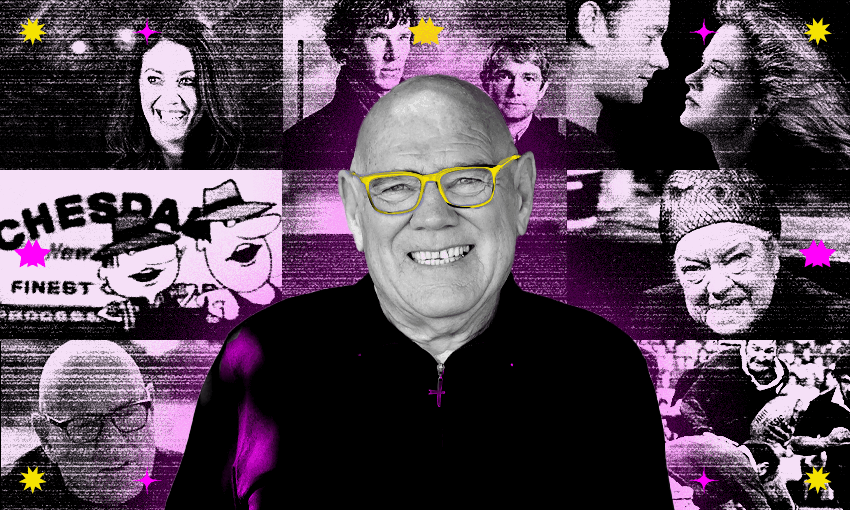Does the maligned Folie à Deux at least deserve a little credit for daring to try something different?
What’s this then?
Back in 2019, Joker took the world by storm. It made US$1bn at the global box office on a budget of about $60m. It was nominated for 11 Oscars and won two. It picked up the prestigious Golden Lion at the Venice Film Festival. But it also wasn’t all that well received by critics (it has a lukewarm 69% on Rotten Tomatoes) and generated controversy for its graphic violence and concerns of real world copycats (for example, Vanity Fair described it as being sympathetic to “white men who commit heinous crimes”).
Five years later, we’re back with Joker: Folie à Deux. Featuring Lady Gaga in tow as an all-dancing, all-singing Harley Quinn, the sequel appears to have destroyed any of the goodwill from fans that saw the predecessor become a global sensation. So what happened?
The good
A lot has already been said about Joker: Folie a Deux. It’s been called an “unpleasant slog“, unrelentingly grim and just plain “dull“. While it’s true that critics didn’t love the first one either, Joker earned a huge amount of respect from those in the film industry and the general public. Sitting at a crushing 30% from general audiences and 33% from critics on Rotten Tomatoes, as well as bombing its opening weekend in the US, Folie à Deux seems to have failed at winning anyone over.
I can’t say I entirely disagree with the critical consensus, though I probably had more fun watching Folie à Deux than those I’ve cited above. Part of that is because, as a Lady Gaga diehard, I am contractually obliged to defend her performance as Harley “Lee” Quinn (it actually is really good, I swear). She’s quietly and convincingly menacing, further distinguishing herself from the career-defining turn as a fledgling pop star in A Star is Born back in 2018. It also goes without saying that Joaquin Phoenix is again terrifyingly impressive as Arthur Fleck/Joker, somehow even more physically transformed than last time. Together, the pair are well-matched and the scenes they do share together are the best.
But beyond the performances, I respected director/writer Todd Phillips’ decisions to take some truly wild swings. Not only is Folie à Deux a musical (more on that below), but it also subverted all expectations of what a sequel to Joker would and could be. It responds to the claims that the first film was incel bait by basically telling those who glorified Joker to fuck right off. And is that a bad thing? Commercially, maybe, but I admire the choice to try and address the disturbing elements of the first film with seemingly little regard for those who would be first in line to see round two.
The not-so-good
Taking wild swings is one thing – being able to land them is another. And that’s where Folie à Deux comes unhinged. While it attempts to reposition Joker as a victim of society and not some sort of heroic outcast, it does little to explain why. A lot of the two-hour and 18-minute runtime is dedicated to a quite boring court hearing that basically relitigates every horrible thing Joker did in the first film and attempts to explain it away. Then, the final scenes of the film render all of it pointless for spoilery reasons I won’t fully go into here.
In short, it tries rather heavy-handedly to say that Joker might not really be Joker, and tells the audience off for ever glorifying him. Again, I see the vision – and I’m not mad at it – but the journey to that conclusion is pretty rocky and quite slow. For a Joker film, there’s surprisingly little Joker here – it earns its R16 rating mainly through its unrelenting grimness rather than its action.
Then, there’s the Gaga of it all. Where Joker leaned heavily on its Martin Scorsese influences, Folie à Deux is grounded in the golden age of Hollywood musicals. Gaga’s performance is excellent, but her role is surprisingly limited. One of the film’s many (and more effective) musical numbers reimagines Joker and Harley’s twisted love affair as a Sonny and Cher-style variety hour called “The Joker and Harley show” – but the film is anything but. And, considering Folie à Deux is a musical and Gaga is one of the greatest vocalists of this generation, it’s bizarre how few opportunities she is given to actually, well, sing (she’s had to release a full side project concept album to remind us). Aside from a couple of short sequences, most of Gaga’s performance is limited to whisper-singing show-tunes in set pieces that are dingy and grey, like much of the rest of the film.
And letting the Lady Gaga sing while sitting down should be a crime. Now that’s something I’d watch argued in a court of law.
The verdict
I can’t help but admire the bold choices made in Joker: Folie à Deux. I’ve rarely seen a film so willing to confound its intended audience. But taking big swings is a risky move, and the film is ultimately bogged down by tedious courtroom scenes and a baffling lack of Lady Gaga.



